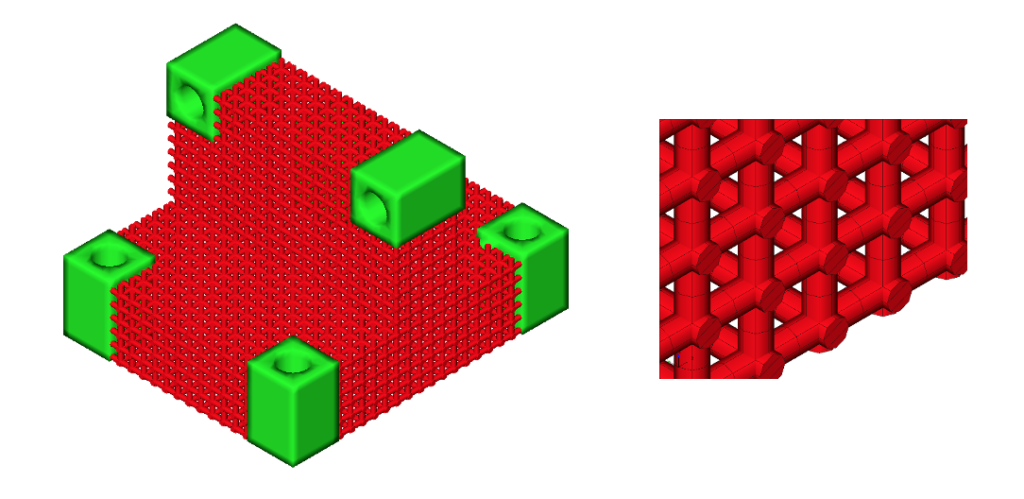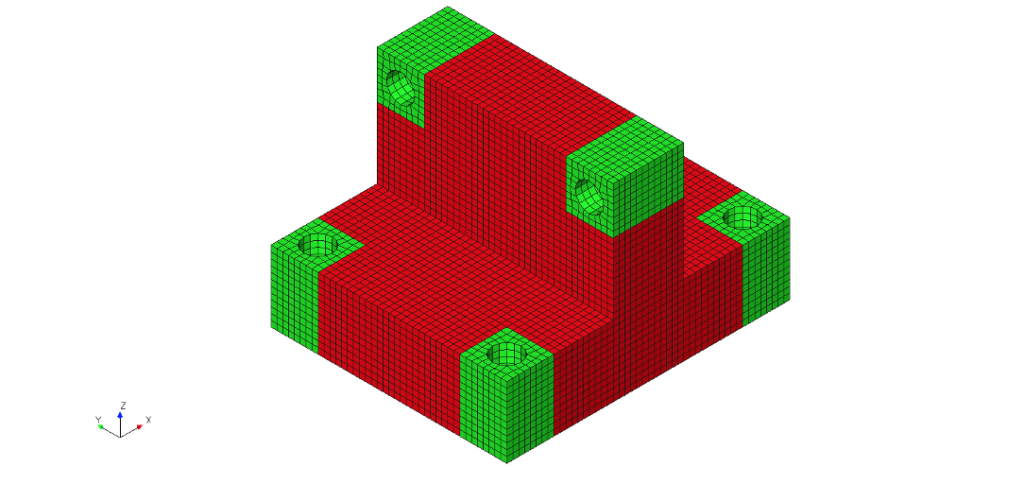Product = GENESIS
The current availability of Additive Manufacturing (AM) techniques and 3D printers has made it possible to print lattice structures. This type of structure has many benefits that include: good strength to weight ratio, excellent shock absorption and impact protection behavior, high surface area which can help to dissipate the heat, and more. However, the details in lattice shape could lead to difficulties in CAD modeling and FE meshing, thereby posing challenges to analyze and optimize the lattice structures.
In the GENESIS software, standard solid elements can be used to simulate lattice structures. The software uses homogenized materials that can represent either a built-in lattice pattern or a user-supplied lattice pattern. This ability means that the lattice structures do not need to be explicitly modeled. Only the lattice type is needed together with two characteristic dimensions: the lattice cell size and the lattice cross-section dimension.
Currently, there are fourteen built-in lattice types in GENESIS: CUBIC1, BCC1, BCC2, DPYRA1, DPYRA2, HCOMB1, HCOMB2, HCOMB3, GYROID1, SCHWAP1, SCHWAD1, GYROID2, SCHWAP2, and SCHWAD2.
The following figure shows the available built-in lattice cell types:
 Figure 1 – Built-in Lattice Cell Types
Figure 1 – Built-in Lattice Cell Types
Example:
Suppose that you have the structure shown in Fig. 2 and you want to analyze it, then later print it using the lattice cell type CUBIC1.
 Figure 2 - a) Example of a Lattice Structure and b) Enlarged Detail of the Lattice Structure (cell type CUBIC1)
Figure 2 - a) Example of a Lattice Structure and b) Enlarged Detail of the Lattice Structure (cell type CUBIC1)
With GENESIS you can model the same lattice structure using standard solid mesh, as shown in Figure 3:
 Figure 3 - Solid Model with Homogenized Properties
Figure 3 - Solid Model with Homogenized Properties
If you now analyze the structure in Fig. 3 (using the homogenized properties of CUBIC1) you will get similar FEA results as if you analyze the structure in Fig. 2. As the model in Fig. 3 has a far smaller number of elements, the results will be much faster. Please note that this also allows for fast optimization. Optimizing the lattice structure dimensions will be a subject of a future blog, so stay tuned for that.
Note: Details of examples similar to the one shown here can be found in the Design Studio for GENESIS examples manual. Check examples TMDSG015 and TMDSG016.